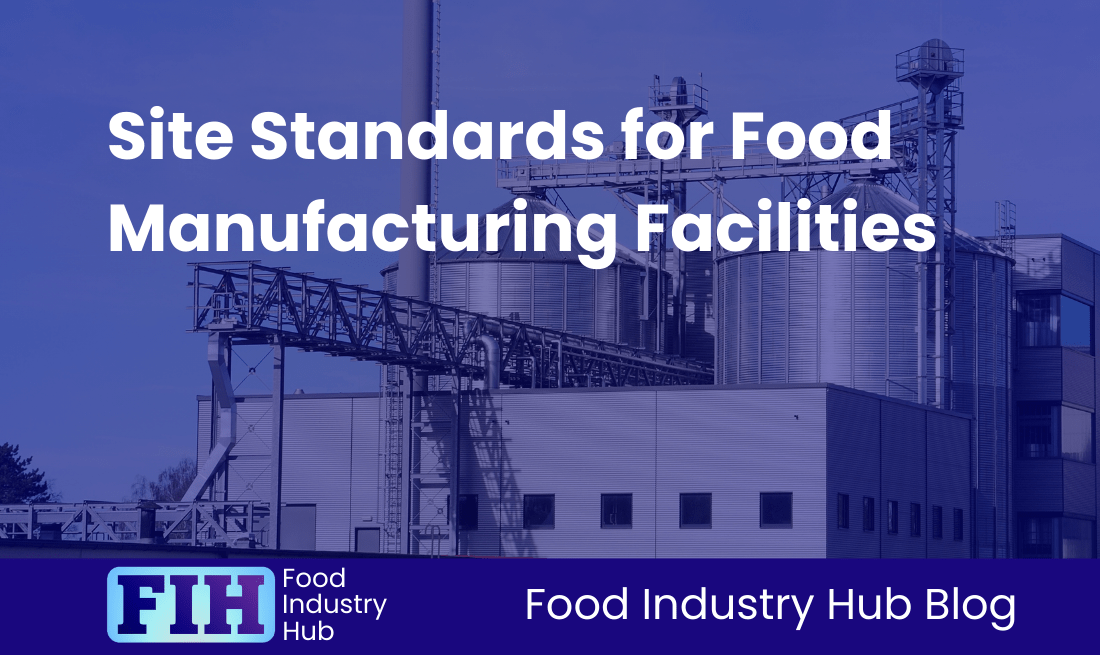Know: Biofilms
Contents
Introduction
Key Takeaways
Unravelling Biofilms
Detecting and Monitoring Biofilms: Techniques and Technologies
Biofilms and Food Safety: Health and Economic Impact
Biofilm Prevention and Control Strategies
The Role of Regulatory Compliance and Standards
Emerging Technologies and Future Directions
Conclusion
Introduction
Biofilms—complex microbial communities—present a significant challenge within food manufacturing settings. Despite frequently being underestimated, these formations can have a substantial impact on foodborne illnesses. Biofilms form as microorganisms attach to surfaces, secreting a protective shield that guards them from environmental pressures and disinfection efforts, heightening the risk of extensive contamination.
To add context to their troubling implications, biofilms can be defined as structured communities of microbes encased within a self-produced extracellular matrix. These microbial aggregates have the potential to develop on a broad spectrum of surfaces, from processing equipment to the food products themselves. This makes them a formidable obstacle for safeguarding food safety. They act as reservoirs for harmful pathogens like Salmonella, Listeria monocytogenes, and Campylobacter jejuni, compromising both food quality and safety, and subsequently raising the chances of financial losses due to equipment damage and contamination-related recalls.
Understanding Biofilms and Their Significance
The ability to understand biofilms is a fundamental requirement for ensuring a safe food manufacturing process. This understanding spans the identification of biofilm-prone areas within facilities through detailed microbial surveillance, as well as utilising advanced detection technologies. An awareness of the consequences posed by the presence of biofilms is imperative. Their existence can lead to food spoilage and contamination, highlighting the necessity for preemptive strategies. Implementation of meticulous cleaning protocols, along with applying multiple control measures such as enzymes and biosurfactants, can enhance biofilm management.
Compliance with Regulations and Managing Biofilms
Abiding by regulatory standards is another primary aspect in handling biofilms, as food manufacturers must uphold cleanliness and sanitation guidelines to limit biofilm formation. The development of innovative approaches—including new enzymatic cleaning agents and unconventional methods—to control biofilms is essential for maintaining safe practices within the food industry.
The intricate dynamics encompassing biofilms necessitates a comprehensive understanding of their formation, detection, and control. This understanding is paramount to protect public health and achieve operational efficiency in food manufacturing.
Key Takeaways
Biofilms pose a substantial concern within the food industry, as they tend to form on diverse surfaces including production equipment and the food products themselves. Their omnipresence represents a significant risk, seeing as biofilms can host dangerous pathogens such as Listeria monocytogenes and E. coli that may result in severe foodborne infections. The harsh health impact underlines the exigency of effective biofilm management techniques, especially considering the role of biofilms in an estimated 60% of foodborne outbreaks worldwide.
Detection and Monitoring Techniques for Biofilms
Implementing reliable detection and monitoring strategies is an essential component of managing biofilms. Traditional methodologies, encompassing visual inspection and microbiological tests, have been found lacking when it comes to tracing mature biofilms. Consequently, advanced techniques such as ATP bioluminescence and ground-breaking sensor technologies are gaining prominence in efforts to identify and treat biofilms before they infringe on food safety.
Biofilms, Food Safety, and Economic Consequences
The potential of biofilms to jeopardise food safety is substantial. They can interfere with sanitisation procedures and contribute to financial losses through product recalls and lengthy sanitation periods. These economic implications underscore the significance of preventive actions aimed at obstructing biofilm growth. Approaches leveraging biodegradable substances like enzymes and biosurfactants can effectively inhibit biofilm development, paving the way for enhanced food safety and economic efficiency.
Compliance with Regulatory Standards
Aligning with regulatory provisions also plays a crucial role in attenuating risks associated with biofilms. Compliance with standards incorporating Hazard Analysis and Critical Control Points (HACCP) facilitates the establishment of hygiene procedures specifically designed to restrict biofilm generation. Rigorous sanitation practices ensure that businesses meet or exceed safety mandates while mitigating associated legal repercussions.
The Advent of Innovative Technologies in Biofilm Management
Emerging technologies carry considerable potential for augmenting proactive biofilm management tactics. Innovations incorporating advanced sensors and imaging techniques intensify real-time monitoring potential, paving the way for early detection and improved responses to biofilm formation. Adopting such technologies not only bolsters food safety outcomes but also promises substantial economic benefits for the food production industry.
Food Industry Hub Management Systems can significantly boost the effectiveness of your food safety and quality management system, leading to improved confidence and elevated quality assurance throughout your operations.
Unravelling Biofilms
Biofilms present a significant concern in the food manufacturing industry. Understanding what biofilms are, how they develop, and the microbiome within them is essential to aid in food safety and quality management. Here, we delve into these aspects along with key terminologies associated with biofilms.
Define Biofilms
Biofilms can be defined as complex multicellular microbial communities. They are embedded in a self-secreted matrix made of extracellular polymeric substances (EPS). The EPS matrix primarily comprises proteins, polysaccharides, and extracellular DNA. It serves as a robust and adhesive architecture facilitating the adherence of microorganisms to a wide range of surfaces. These include metals, plastics, and even plant tissues [Source: Montana State University]. In the field of food manufacturing, biofilms often form on processing equipment, especially in moist environments. This poses substantial challenges to food safety and quality [Source: Frontiers in Microbiology].
Process of Biofilm Development
Biofilms develop progressively, passing through several distinct phases:
- Initial Attachment: Biofilm formation commences when planktonic bacteria chance upon a surface and attach to it in a reversible manner, utilising hydrophobic interactions and molecular forces. This pivotal step opens the path for further colonisation [Source: NCBI].
- Irreversible Attachment: Upon initial adherence, bacteria start to secrete EPS, leading to irreversible adhesion. Besides strengthening the attachment, the EPS produced forms a matrix promoting colonisation [Source: NCBI].
- EPS Production and Maturation: During maturation, the biofilm evolves into a complex three-dimensional structure. The bacteria within the biofilm multiplies and secretes additional EPS. This development forms channels for nutrient distribution and waste removal, enhancing the resilience of the biofilm.
- Dispersion/Detachment: Mature biofilms may disperse, releasing individual cells or clusters. This process allows for colonisation of new surfaces and the sustained lifecycle of biofilm formation.
Microbiome within Biofilms
Biofilms provide a home for diverse microbial communities, encompassing organisms like bacteria, fungi, archaea, and protozoa. Such diversity within the biofilm can significantly influence food safety. For instance, biofilms may harbour harmful pathogens like Salmonella or Listeria monocytogenes. The inherent structure and interactions within a biofilm augment its resistance to cleaning agents and environmental stressors, marking them as a concern in food processing environments. The adaptability of these microbes due to mutualistic relationships and shared genetic material, amplifies their pathogenic potential and their resistance to antimicrobial regimens.
Key Terminology
- Extracellular Polymeric Substances (EPS): The primary constituents of biofilm structure. EPS comprises polysaccharides, proteins, and DNA, supplying structural stability and aiding microbial adhesion.
- Quorum Sensing: A bacterial communication strategy used to co-ordinate behaviour based on population density. Through the release of signalling molecules, quorum sensing enables the regulation functions such as biofilm formation and maintenance. It plays a significant role in the collective behaviours exhibited in biofilms, including their resistance to antimicrobial agents.
A comprehensive understanding of biofilms and the associated terminologies like EPS and quorum sensing is invaluable for food manufacturing professionals. Utilising this knowledge can help devise more effective cleaning and maintenance protocols, thereby improving food safety and product quality.
Detecting and Monitoring Biofilms: Techniques and Technologies
Traditional Biofilm Detection Methodologies
In the context of food production, traditional biofilm detection techniques primarily comprise culture methods and visual inspection. Culture methods entail isolating and culturing bacterial colonies from surfaces thought to harbour biofilm formation. Despite the effectiveness of these methods in identifying some pathogenic microbes, they sometimes fall short due to laborious procedures, extended duration, and their inability to identify all living organisms, especially those that are non-culturable under standard laboratory conditions[Source: Frontiers in Cellular and Infection Microbiology]. This process may last several days, creating potential delays in essential food safety interventions and possibly leading to prolonged periods of risk.
Visual inspection is yet another simple method for identifying biofilm presence by examining physical characteristics such as slime or discolouration on equipment surfaces. Although this technique provides quick results, it lacks sensitivity and precision, and may miss biofilms in the early stages of formation when they could be more effectively managed[Source: PMC].
Advanced Biofilm Detection Systems
Emerging advancements in biofilm detection technologies are transforming the monitoring process within the food manufacturing sector. Particularly, biosensors are playing a key role by utilising biological elements (like enzymes or antibodies) to identify specific microbial communities or metabolic by-products associated with biofilms. These systems permit real-time monitoring, enabling swift responses to changes in microbial activity, with a potential to prevent contamination [Source: ACS Sensors].
Among these progressive techniques, ATP bioluminescence stands out as a substantial method to measure adenosine triphosphate (ATP) levels, which are markers of microbial activity. This approach provides immediate results, allowing manufacturers to quickly assess cleanliness and detect biofilm presence. Yet another innovative approach is Polymerase Chain Reaction (PCR)-based methods that amplify specific DNA sequences to identify biofilm-associated pathogenic species, bringing a considerable degree of accuracy and specificity.
Imperative of Continuous Monitoring
Endless monitoring of biofilms in food manufacturing is an essential practice to improve product safety and prevent contamination. Real-time tracking systems enhance early detection of biofilm formation, facilitating swift interventions before substantial biofilm development. Sectors such as dairy processing environments, which are especially vulnerable to biofilm formation, could significantly benefit from consistent surveillance. Effective continuous monitoring strategies do not only reduce risks, but also contribute to the optimisation of cleaning and sanitation protocols, reinforcing compliance with health and safety regulations.
Key Terminology
Adenosine Triphosphate (ATP): This molecule acts as an important energy carrier in cell processes and serves as a marker for microbial activity. Elevated levels of ATP often signify the existence of biofilms.
Molecular Assays: These testing methods, including PCR and sequencing, equip us with valuable insights into the microbial constitution of biofilms, allowing for the identification of specific organisms and enhancing the understanding of biofilm dynamics.
The amalgamation of advanced detection methods and continuous monitoring is key for contemporary food manufacturing processes. Using these methodologies ensures that food safety professionals can proactively manage biofilm risks, thereby verifying that cleanliness routines are effective, and regulatory criteria are satisfied.
Sign-up for the Food Industry Hub Mail Service
We regularly produce new content for food industry professionals, and the Food Industry Hub Mail Service is the best way to stay up to date with the latest additions.
Signup today to be added to the Food Industry Hub mailing list.
Biofilms and Food Safety: Health and Economic Impact
Health Risks Associated with Biofilms
Biofilms in food environments pose alarming health risks due to their capacity to harbour perilous pathogens like Listeria monocytogenes, Salmonella enterica, Staphylococcus aureus, and E. coli O157:H7 [Source: Frontiers in Microbiology]. These microorganisms contribute to serious foodborne illnesses. For instance, Listeria monocytogenes can lead to listeriosis, an infection that poses a remarkable threat to vulnerable individuals, such as pregnant women and the elderly. This pathogen’s ability to grow even at refrigeration temperatures makes it a major contaminant in ready-to-eat foods.
Salmonella and E. coli, on the other hand, can result in widespread gastrointestinal outbreaks. These instances are frequently related to inadequate cleaning and sanitisation measures exacerbated by the persistence of biofilms [Source: Cremco].
The inherent protective qualities of biofilms help these pathogens resist usual sanitation methods, thus providing an environment favourable to their survival and propagation [Source: PMC]. This situation promotes continuous contamination of food products and surfaces, highlighting the necessity for diligent biofilm management in food processing facilities. For instance, biofilms can enable the release of toxins from bacteria such as Shiga toxin-producing E. coli, leading to severe health outcomes like hemolytic-uremic syndrome (HUS).
Economic Fallout
Biofilm-related contamination in food manufacturing leads to substantial economic downfalls. Specifically, in the meat industry, biofilm contamination is assumed to trigger financial losses amounting to approximately $150 million each year. These losses are primarily the result of product recalls, legal liabilities, and damage to reputation [Source: PMC].
In a larger context, global losses amounting to billions are borne due to food product recalls, often linked to pathogen contamination attributed to biofilms. These losses account for both direct costs and secondary issues arising from consumer distrust.
Poor biofilm management can lead to heightened operational costs. Therefore, food businesses are forced to invest heavily in improving cleaning protocols and monitoring systems to adhere to food safety regulations.
Regulatory Failures
The presence of biofilms often results in failure to abide by essential food safety regulations, such as the Food Safety Act 1990. This law highlights the legal responsibilities of maintaining clean conditions to protect consumer health. Numerous food establishments grapple with these regulations as biofilms serve as reservoirs for pathogens that escape common sanitation methods.
Inadequate biofilm detection systems can lead to unidentified persistent contaminants, subsequently increasing the risks of regulatory penalties or even shutdowns of facilities. Therefore, neglecting biofilm control not only impacts food safety but can also lead to significant regulatory consequences for food manufacturers, encouraging them to adopt more comprehensive and innovative biofilm management strategies.
Key Terminology: Antimicrobial Resistance (AMR)
Antimicrobial Resistance (AMR) is the ability of microorganisms to withstand the effects of antimicrobial agents. Biofilms pose a substantial challenge related to AMR due to the enhanced protective environment they provide. This can make bacteria up to 1,000 times more resistant to biocides compared to their non-biofilm counterparts. This increased resistance complicates the eradication of pathogens, making it challenging to achieve safety in food production environments. The implications of AMR extend beyond immediate food safety concerns, presenting wider public health risks as resistant pathogens percolate through the food supply [Source: New Food Magazine]. Hence, innovative solutions like developing antibiofilm surfaces and advanced detection technologies are key in addressing biofilm formation and its associated AMR risks in food manufacturing settings.
Biofilm Prevention and Control Strategies
In the food manufacturing industry, strategically managing biofilms contributes significantly to improving food safety and quality.
Successful Sanitisation Practices
Having an effective sanitisation protocol is essential in hindering biofilm formation. Such an approach includes identifying sources of contamination, employing the four key factors of wash such as concentration, temperature, time, and mechanical force to enhance cleaning efficacy and minimise residual biofilms on surfaces. Research indicates that well-executed, customised cleaning regimes significantly reduce biofilm presence [Source: Food Safety Magazine].
Sanitisation can be further supported by Cleaning-in-Place (CIP) systems. Such systems enable the cleaning of intricate equipment without disassembly, using caustic or acidic agents that effectively disrupt biofilm structure [Source: RSC Advances]. Designing equipment with sanitary considerations—favouring smooth, rounded surfaces that lack crevices—can notably lower potential biofilm harborage points [Source: Frontiers in Microbiology].
Surface Modification for Prevention
Surface modification techniques provide a proactive way to prevent biofilm adherence. Antimicrobial peptide coatings inhibit bacterial attachment and thereby decrease the initial stages of biofilm formation. These peptides present broad-spectrum activity and reduce chances of resistance development.
Similarly, surfaces engineered to be either hydrophobic or superhydrophilic significantly change microbial attachment behaviour. Materials customised to resist adhesion hinder biofilm formation due to modified physical and chemical properties [Source: National Institutes of Health]. In addition, biosurfactants can be used to modify surfaces to reduce microbial adhesion effectively, thus impairing biofilm growth.
Biological Methods for Biofilm Control
Innovative solutions for biofilm control involve incorporating biological methods such as bacteriocins—natural antimicrobial peptides—that disrupt biofilm integrity and effectively counter pathogenic bacteria. [Source: National Institutes of Health]. Also, engineered bacteriophages degrade the biofilm matrix through specific enzymatic processes, thereby dismantling biofilm structures to enhance eradication potential.
An additional preventative tool is the use of quorum sensing inhibitors. These disrupt bacterial communication, integral to biofilm development, with compounds derived from natural sources to effectively inhibit these signalling pathways and limit bacteria’s ability to form protective biofilms.
Key Terminology and Practices
To manage biofilms successfully, understanding key terminologies and practices is necessary. Good Manufacturing Practices (GMP) provide a robust foundational framework for maintaining a clean environment, minimising risks associated with biofilms. Regular monitoring and sanitation audits play an integral role within GMP guidelines.
In addition, introducing enzymatic disruptors like DNase I targets the extracellular polymeric substances (EPS) matrix of biofilms, assisting their degradation and removal. Therefore, a combination of effective sanitisation practices, surface modifications, and innovative biological methods should be considered paramount in effectively managing biofilms for safer and higher-quality food production.
The Role of Regulatory Compliance and Standards
In the context of food production, the UK employs a detailed structure of regulations and standards for hygiene and biofilm management. The Food Standards Agency (FSA) is the predominant organisation that ensures food hygiene, collaborating with local authorities such as Environmental Health Officers to uphold food safety legislation. Although there are not many specific regulations about biofilm management, there are guidelines that underscore the importance of extensive hygiene practices in reducing biofilm formation. The Food Safety Act 1990, and the Food Hygiene (England) Regulations 2013 are among those that mandate specific standards businesses in the food sector need to adhere to for ensuring public health safety [Source: Food Standards Agency]. Additionally, the National Biofilms Innovation Centre (NBIC) is significantly involved in setting standards and promoting research aimed at creating effective biofilm control products.
UK Regulations Concerning Hygiene and Biofilm Management
Global Regulatory Standards: EU vs. USA
EU Regulations
The European Union has rigorous food safety regulations, notably the EC Regulation No. 852/2004 [Source: EUR-Lex] which outlines necessary hygiene practices in food handling [Source: Cleaning Matters]. The requirement of HACCP (Hazard Analysis and Critical Control Points) focuses on the detection and reduction of food safety risks, inclusive of those associated with biofilms. Despite the absence of explicit mention of biofilms in the regulation, maintaining reliable cleaning and maintenance standards is essential in their management.
USA Regulations
In the United States, the Food and Drug Administration (FDA) and the U.S. Department of Agriculture (USDA) manage food safety. The Food Safety Modernization Act (FSMA) shifted the focus from reactivity towards contamination incidents to their proactive prevention. This legislation gives weight to preventive measures for food safety, which may incorporate strategies to manage biofilms via enhanced sanitation practices and environmental monitoring [Source: NCBI]. Similar to the EU, the USA employs HACCP systems, but the FSMA encourages wider preventive strategies adaptable to emerging concerns relating to biofilm management.
Consequences of Compliance Pressure
Higher regulatory standards have instigated significant changes within the food manufacturing industry. Businesses have begun to establish improved cleaning protocols and invest in technologies that aim to detect and abolish biofilms. Innovations like the TBF 300S biofilm detection system by Christeyns Food Hygiene exemplify the industry’s response to compliance requirements [Source: NBIC]. Additional regulatory pressures encourage the creation of operational regulations that prioritise sanitation design principles in machinery and production lines, thus reducing the chances of biofilm formation.
Key Terminology and Regulatory Bodies
Important terminologies in the context of biofilm management include the European Food Safety Authority (EFSA), which offers extensive scientific direction on food safety hazards, including those related to biofilm growth. The term ‘Preventive Controls for Biofilms’ refers to forward-looking strategies in food safety frameworks that aim to minimise the proliferation of biofilms on surfaces and equipment. Lastly, the National Biofilms Innovation Centre (NBIC) has a significant role in driving for the standardisation of biofilm management practices throughout the food industry.
Emerging Technologies and Future Directions
Innovative Approaches for Biofilm Management
Some of the most recent advancements in anti-biofilm technologies are already reshaping the food manufacturing industry’s strategies for managing biofilm-related issues. A prominent innovation is the use of Non-Thermal Plasma (NTP) Treatment. This unique technology enables the disruption of biofilm structures without the negative impacts commonly linked to high thermal processes. It involves the use of energetic particles to create reactive gas species capable of inactivating biofilms on food processing surfaces, thus ensuring food safety and quality. Although research is still ongoing to delineate practical applications within the food industry, existing studies underscore NTP’s potential as a disinfection tool in environments where sensitivity is key.
Another groundbreaking solution to biofilm management is the use of Biosurfactants. Sourced naturally, these surface-active compounds play a stellar role in biofilm control, reducing the surface tension within biofilms which inhibits formation and drives dispersal. Lab results have demonstrated impressive inhibition rates with some biosurfactants, reaching up to 99.8% in stymieing biofilm formation, thereby enhancing the efficacy of prevailing biocontrol mechanics such as antibiotics [Source: Frontiers in Bioengineering and Biotechnology]. With low toxicity and high biodegradability, biosurfactants show promise as an eco-friendly substitute for chemical disinfectants in food processing environments.
The Role of Artificial Intelligence
The induction of Artificial Intelligence (AI) in the sphere of biofilm management is an emerging focus with potential for game-changing developments in the near future. AI can bring significant transformation to the way food manufacturing plants detect and tackle biofilms via advanced detection systems and predictive modelling algorithms. By making sense of data from environmental sensors and AI can pinpoint prime hotspots for biofilm formation and enhance cleaning protocols. For instance, advanced models can assist in the prediction of biofilm growth by calculating multiple parameters such as temperature, humidity and surface material, thereby aiding proactive countermeasures [Source: NCBI]. This novel approach offers the potential for both significant advancements in safety measures and operational efficiencies within food manufacturing settings.
Collaborative Research Initiatives
To advance our comprehension of the dynamics of biofilms and mechanisms to control them, it’s important to promote global collaborative research initiatives. Multidisciplinary research endeavours that bring together microbiologists, material scientists and engineers can greatly contribute to creating cutting-edge biofilm mitigation technologies. Their efforts can guide the development of best practices and groundbreaking solutions to tackle the complexity of challenges posed by biofilms across various sectors. Coordinated research efforts allow for pooling of resources and knowledge internationally, bolstering strategies for effective biofilm treatment.
Decoding Key Terminology
Unfamiliar with some of the terms used in advanced biofilm management? Non-Thermal Processing Technologies refer to techniques that work without using high temperatures, maintaining product integrity while affecting biofilmic contamination. Graphene Oxide, a material identified to possess antimicrobial qualities, has potential implications for biofilm management. Its ability to interfere with microbial viability suggests possible paths for future exploration in preventing biofilms within the food industry. Lastly, the ingenious utilisation of nano-delivery systems that leverage nanotechnology for precise delivery of antimicrobial agents hints at new strategies for penetrating biofilms and enhancing control [Source: Frontiers in Microbiology].
Conclusion
The complexity and significant influence of biofilms on the safety and quality of food make their study essential within the food manufacturing industry. Characterised by microorganisms nestled within an extracellular matrix, biofilms can form on a variety of surfaces in food processing settings. They therefore create a potential hotspot for pathogens such as Listeria monocytogenes, Salmonella, and E. coli, prolific bacteria that present serious risks to consumer health.
For ensuring food safety, the need for accurate biofilm detection methods is significant. Conventional techniques, like agar plating, often prove inadequate, particularly with viable but non-culturable (VBNC) cells. However, more advanced strategies, including metagenomics, nanosensors, and loop-mediated isothermal amplification (LAMP), promise more precise, real-time detection and tracking of biofilms. Such advancements allow early intervention steps before contamination occurs [Source: Polish Journal of Food and Nutrition Sciences].
The influence of biofilms extends beyond health concerns and affects food quality, leading to significant financial considerations. For the meat industry alone, it’s estimated that biofilm-related spoilage causes approximately $150 million in annual losses. Therefore, implementing effective preventive strategies, such as thorough sanitation protocols and surface modifications, is a necessity for both controlling biofilm formation and maintaining product integrity.
The importance of regulatory compliance shouldn’t be overlooked in the process of managing biofilms. This involves the enforcement of high hygiene standards, which food manufacturers are obliged to meet. Technological advancements, such as antibiofilm coatings, edible coatings, and new sensor technologies, hold promise for enhancing biofilm detection and control [Source: EurekAlert]. These innovative measures not only bolster food safety but also meet the increasing demand for sustainable food production practices, fulfilling the dual objectives of ensuring public health and minimising economic losses in the food sector.
About The Food Industry Hub Knowledge Centre
The Food Industry Hub knowledge centre delivers informative content on a variety of topics pertinent to the food manufacturing industry.
You can return to all topics by clicking here.
From The Food Industry Hub Blog
Expanding on this topic with related content from our blog.











